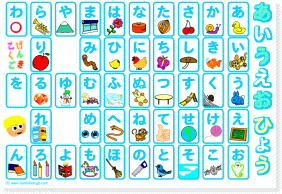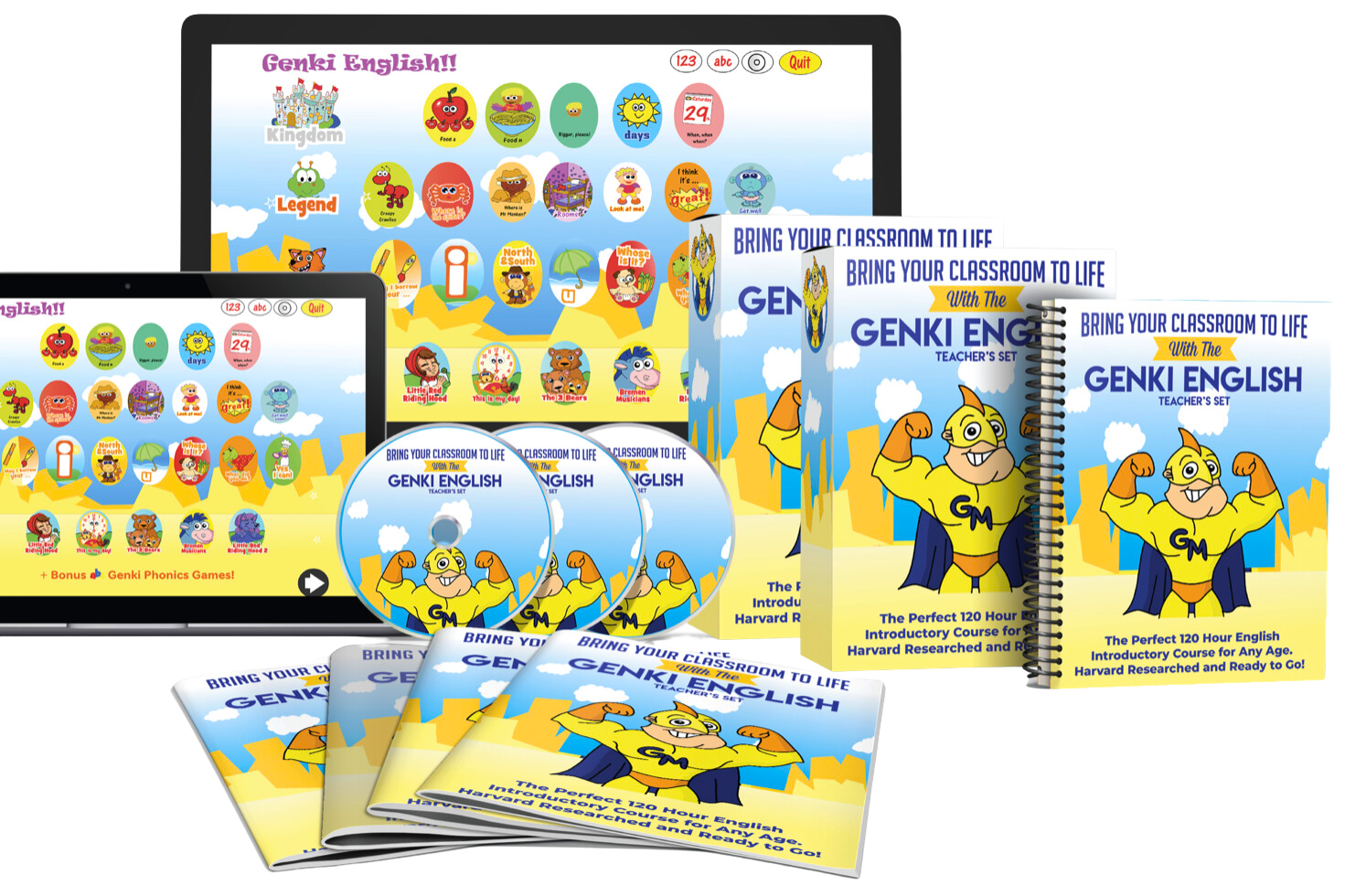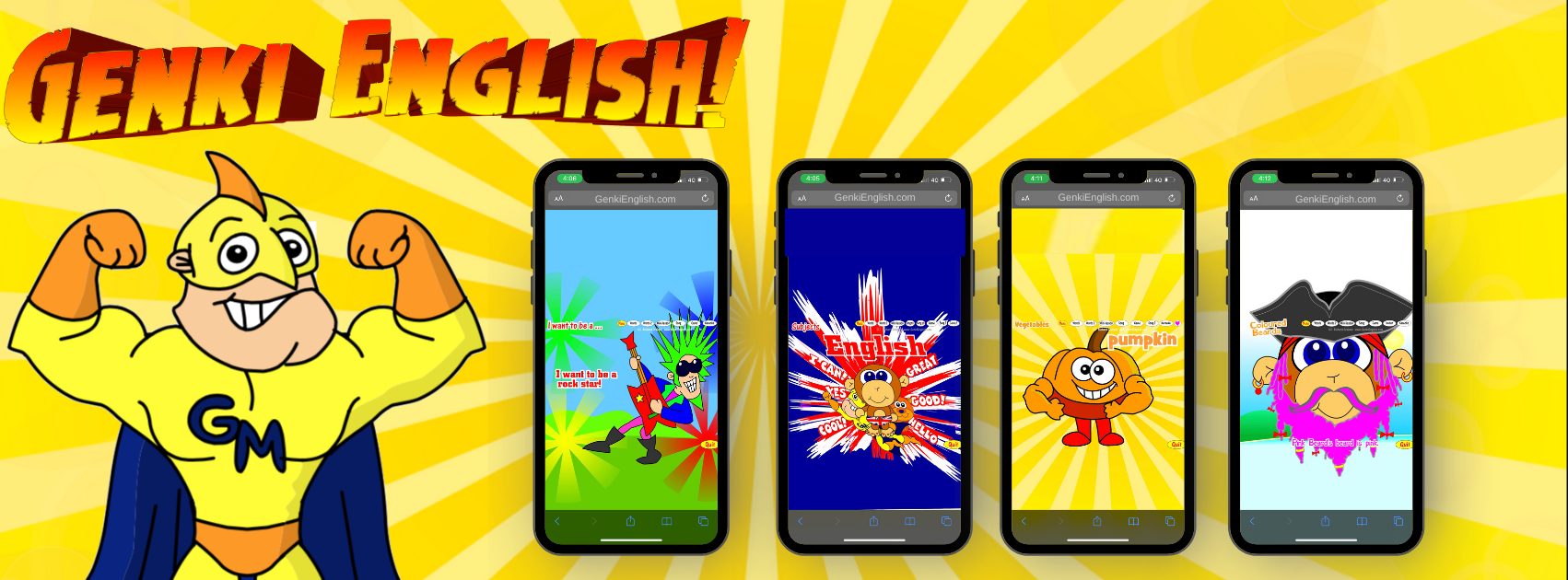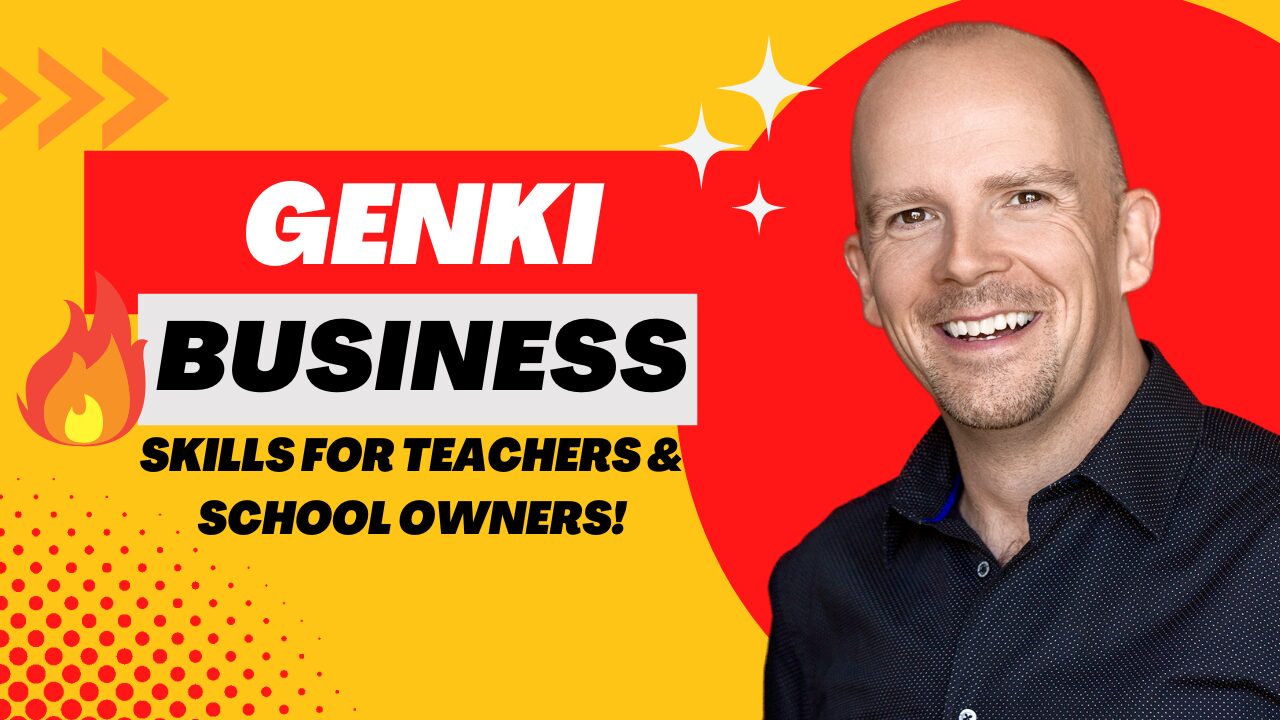 If you start teaching English with the ABCs, here’s a nice experiment to try.
If you start teaching English with the ABCs, here’s a nice experiment to try.
Have a look at my GenkiKokugo.com site.
There you can teach yourself the “hiragana” alphabet.
Fun? Enjoyable? Useful?
Hopefully what you’ll find is that if you don’t actually speak any Japanese the alphabet is pretty much useless.
1. You don’t know what the anchor words are (e.g. a = apple, i = ink etc.)
2. It doesn’t help at all with being able to speak to anyone.
It’s sort of like a stairmaster, lots of exercise that feels like hard work, but at the end of the day you’re still on sqaure one.
Of course if you do speak Japanese then it all makes sense.
And that’s the key!
The English alphabet, the abcs, are for when the kids * already * know a lot of English. Teaching abcs before then is a waste of time at best and a big hindrance at worst.
So the new order is
1. Speak and listen (with songs & games)
2. Learn to read (with Phonics)
3. Alphabet (for spelling)
And it might take you many months, or years, to get to step 3.
Unless of course your aim is for the students to * not * learn so they keep coming for many, many years.
But we know you’re not going to let that happen!




I tried the Japanese alphabet. . . WHA ? ? How the heck do you tell the difference between the sounds? ! ? They sound so much alike. I have new respect for the little 3 year-old tyke that I’m teaching that has learned the “ABC” song by heart! That must have been alot of work for him! (mother tongue is french so the English alphabet doesn’t have alot of meaning for him.) I’ve started him on some songs like “how are you” and “rock paper scissors” and “What’s your name”, so am making some headway.
Dan from Quebec, Canada
Hello!
ouch!
Japanese is not for me! I will show your website to learn Japanese to my step-daughter who is really into japan, drawing mangas and so on. ( She likes watching Mangas and says she understands some words now cause she reads the translation meanwhile)
Dan if you teach a 3 years old boy ” What is your name” you can then print pictures of characters he knows ( Mickey mouse, Shrek, Pinocchio or else, just check his mom that he knows them), make puppets and have them meet and sing just like in the song.
With my 5-6 years old I made like 20 characters and they had to act and talk like the character and meet two by two. That was funny especially when a boy had Lilo or Cinderella !!!
It doesn’t require them to know how to read, which is good!
Richard, i quite agree with what you say regarding the alphabet. I think it’s a great idea though to put the ABC song weeks ( months?) before you even want to teach the song, just in the background while they draw or wait for the other kids to come at the beginning of the session.
This way the kids generally hum the song long before.
When do you think it’s best to teach them the alphabet? I have a group of 5 and 6 years old, the 6 years old already know how to read in French whereas the 5 years old still struggle with the French Alphabet. I feel like the 6 years old would be ready but not the 5 years old, I think I will have to wait a couple of months…
I don’t work on phonics with them… Maybe I should start now that they have some vocabulary.
I was thinking, a giant ABC on he wall and pin pictures / flashcards they know.
@Emmanuelle: I was just about to make the same comment about the characters – it’s great isn’t it!
When we were doing the training with the University of Newcastle the best time to introduce the alphabet was part way through the “alternative readings” part of the phonics. It’s usually not a good idea to introduce the song before then though as it particular confuses the ways of reading the long/short vowels etc.
Putting a big ABC on the wall with flashcards of words they know is a brilliant idea! And rather than the ABC order, try the order from the phonics page, again to make the distinction between the different vowel sounds really easy!
And for the Japanese, my learning to speak Japanese page is here: http://GenkiJapan.net
Hi everybody!
Here in Russia there are also a lot of argues concerning teaching alphabet when kids just get acquainted with a foreign language.
I myself tried to teach my own son Russian alphabet whan he was about 2 years old. But the letters themselves ment for him nothing.
I think now a picture alphabet is OK to decorate the room and to awaken interest to the signs.
BUT preschool children tend to operate more with real objects so we have to let them play rather than decode signs.
http://www.mscd.edu/extendedcampus/toolsofthemind/assets/pdf/Young_children_May_03.pdf
“The ability to operate with symbolic substitutes for real objects contributes to the development of abstract thinking and imagination. Vygotskians
believe that imagination is an expected outcome of play, not a prerequisite for it.”
Interesting stuff Richard…
I would however point out that the “Stairmaster” is actually a very effective piece of kit if used correctly.
Joking aside.. Interesting and thought provoking.
Cheers
Jerry
I fully agree on this. At elementary school teachers complain about kids not being able to spell English correctly, but how could they when they’re still having problems with the spelling of their mothertongue (Italian)? Letters are still very abstract signs to them.
It’s my experience as well that if you wait with English reading/writing until at least 3rd grade (9 yrs) it’s so much easier, and if they’ve already done at least one year of GE songs and games the results are amazing.
If the kids know how to pronounce a word and can associate it to a picture or a gesture, spelling isn’t that big a problem.
I haven’t tried the full phonics course yet, but also just using it for a few of the more difficult letter combinations has been great!
Good job Richard. Sometimes we forget that children don’t know English and we teach things that are not useful. When I began to teach English I always tought a ABC song, but I didn’t believe in it because /ei/ is not ei in car, so the best it’s to teach your phonics materials, real sounds in English.
Thank you very much for your lesson.
I’m constantly having this discussion at the school I am at right now. Whenever, we discuss the primary level classes, the school and education leaders are always adamant that the kids need to know the alphabet and the letter sounds (basic letter sounds of the 26 letters and the letter names)…this is only for kids that haven’t studied English previously (though I’ve never understood how teaching the letters and sounds is a pre-requisite.)
Wish I could convince them. I’m still trying. It is all about teaching USEFUL stuff!
I think that teaching phonics to children around five is good and useful. At this age children enjoy to read the streets signs and to find letters around the city.
The may not be able to spell properly, but that is not a big problem. They will learn to spell better as they keep learning words in English. And of course, being able to read can help the visual learners.
I think that at this young age, between 5 and 8 years, children like much more to read what they’ve learned than at older age.
In Japan, at elementary schools, teachers teach the alphabet to 3rd graders in a funny and useless way. They teach the 3rd graders to write Japanese language using the alphabet, in both, capital and small letters. At first sight, it seems good. However, everything is not as great as it may sound. Teachers spend 3-4 months to teach how to write the kids’ names and some Japanese words in several different ways, AT THE SAME TIME!! They really confuse the kids and make it very complicated.
Here I give you some examples of three words written in different ways, as the kids “have” to learn them.
Toukyou / Tôkyô
Susi / Sushi
Tyujyo / Chuujou / Chûjô
Plus the “computer” way: To give an example, to introduce the “n” sound to the computer they must press twice the “N” key. So, if the child’s name is KEN, when it comes the time to write it on a paper, he will write it as KENN (with the double “n”).
Can you imagine 8-9 years old having to remember so many options to write the same thing!
The funniest thing is that, on the 4th grade, the teachers usually don’t make them write anything using the alphabet (at least in the countryside town where I live) so in two days, they forgot everything.
In the 5th grade, teachers teach them again the alphabet, but this year only the capital letters.
Finally, in the 6th grade, it’s time for the small letters.
Children can’t read anything after three years of learning the alphabet.
I just can’t understand the philosophy behind this way to teach reading and writing.
Sorry for the long, and rambling comment.